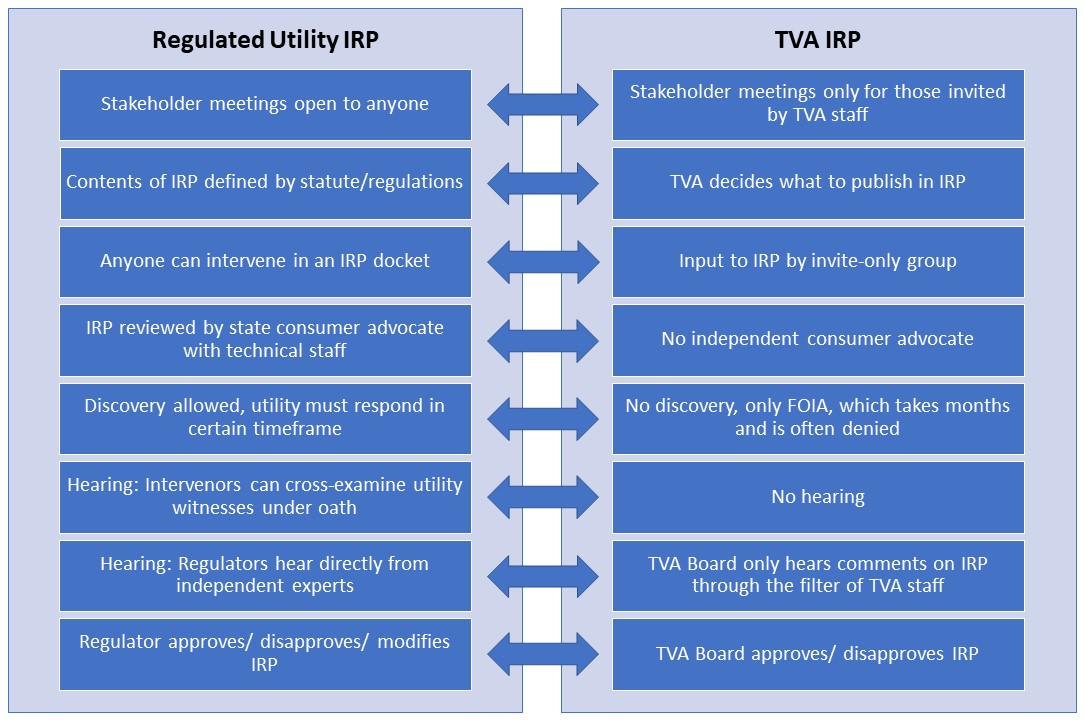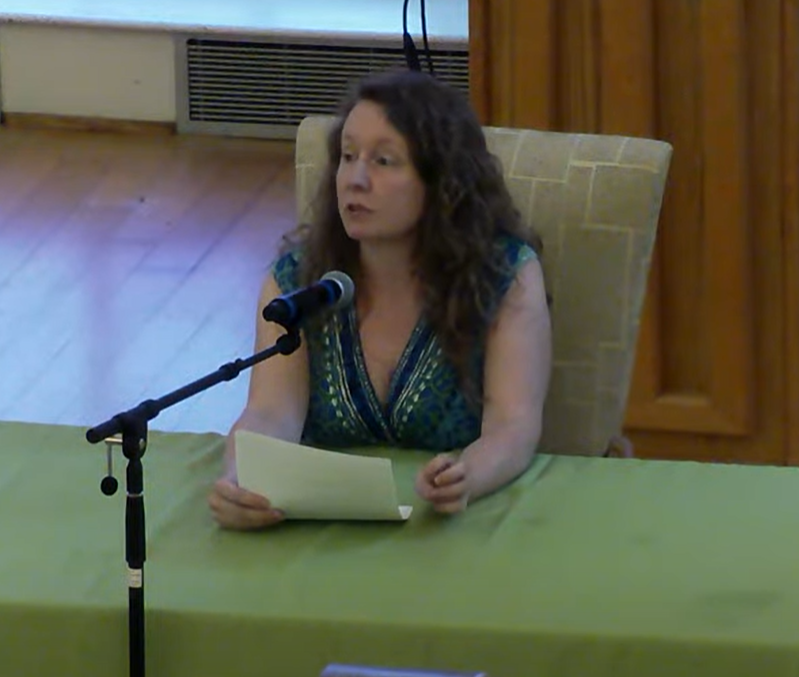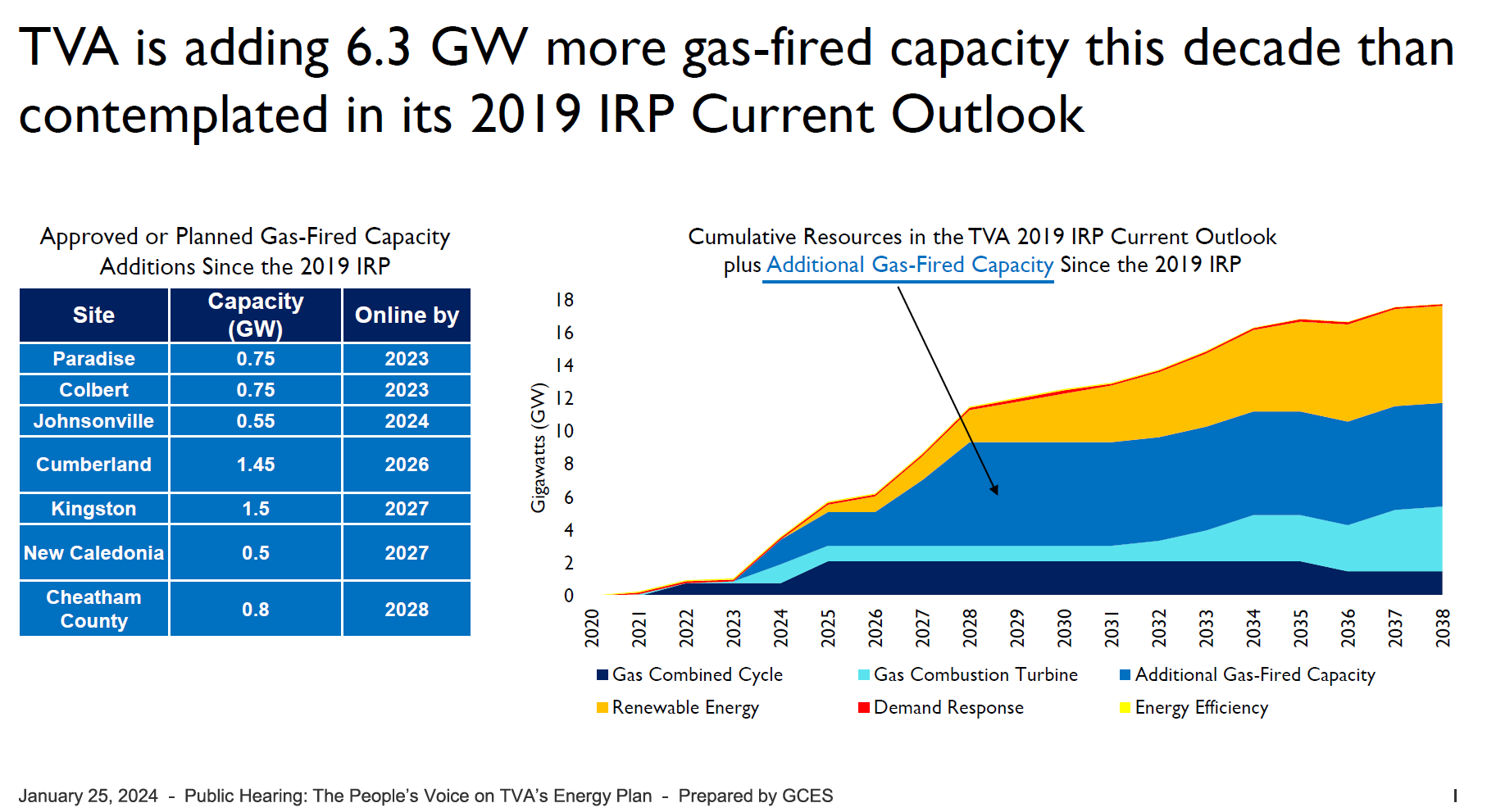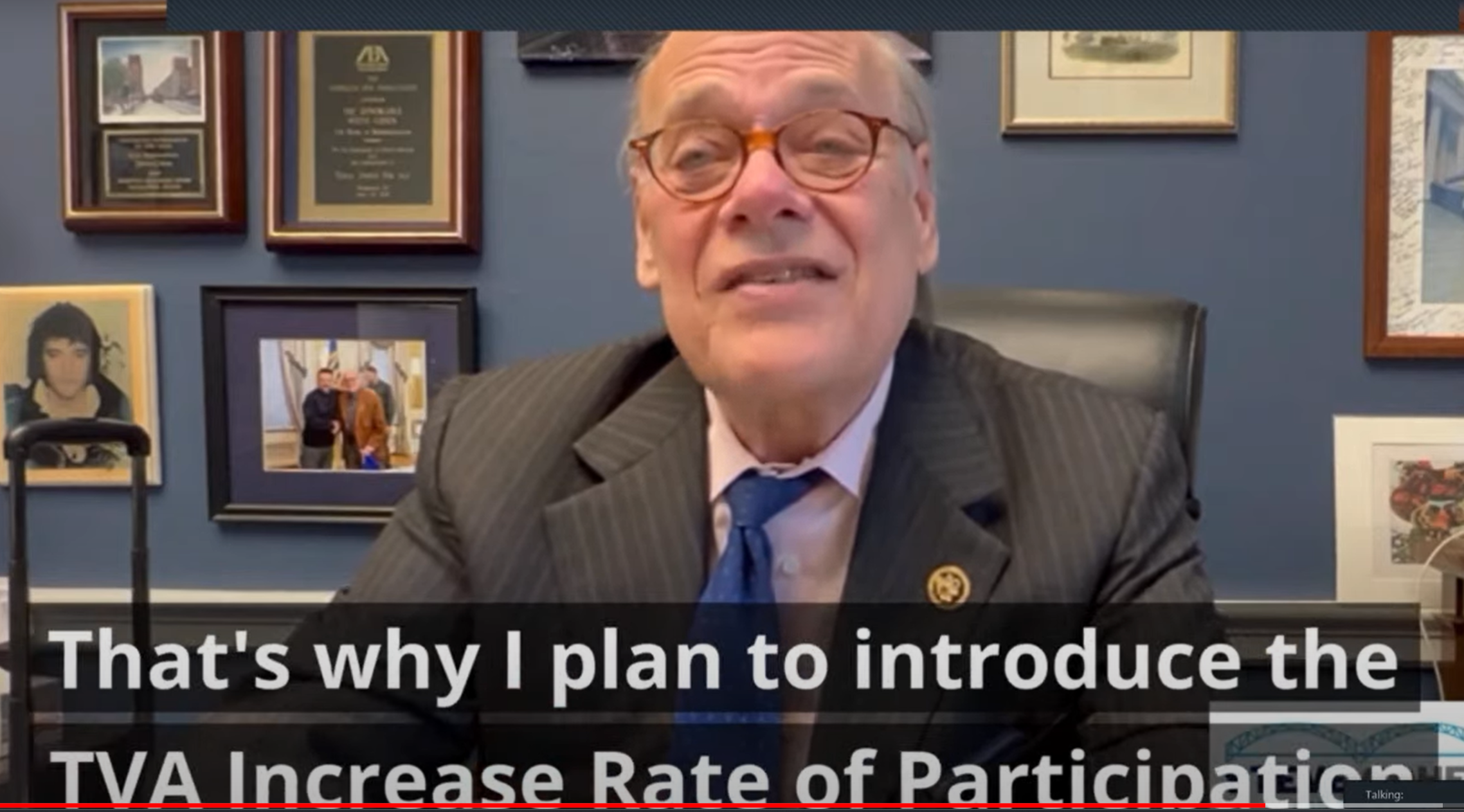TVA's Board of Directors refused to hold a public hearing on TVA's 2024 draft IRP, so we held our own.
Maggie Shober and Bryan Jacob | February 2, 2024 | Tennessee, UtilitiesIntegrated Resource Planning (IRP) is the process that most utilities use to make important decisions about the future of our electricity system. Public hearings for expert testimony and public input in front of independent regulators are key components in IRP processes at utilities across the country and are the norm.
But at TVA, Things Look a Little Different
TVA is structured differently than other utilities: originally “built for and owned by the people,” TVA is the nation’s only federally-owned utility. Yet TVA has one of the least-public IRPs in the nation. TVA is a self-regulated federal monopoly — the TVA Board of Directors is supposed to serve as the utility’s regulatory body — but all information the Board receives comes through TVA staff. The TVA Board has no independent staff like other regulators. Utilities across the region would surely like the option to filter the information their regulators hear, but that is not the way state utility regulation is designed. Except at TVA.
On January 25, in Nashville, Tennessee, four experts provided testimony on TVA’s IRP process and contents, and members of the public crafted recommendations for TVA through breakout groups. Click here to watch a recording of the entire Hearing. The recommendations from experts and the public were delivered to the TVA Board on February 12.
The hearing was kicked off with a video statement from Congressman Steve Cohen (who represents a district of Memphis) in which he announced a bill he’s preparing that will require TVA to be more transparent and inclusive in its resource planning efforts — precisely what we’ve been advocating for.
The first session of the hearing mimicked the style of a public hearing a regulatory commission would ‘typically’ hold when reviewing a utility’s IRP. Four experts in energy modeling and policy provided analysis and findings on TVA’s energy planning. Below are some highlights from each presenter.
TVA’s Planning Process is “Merely a Thought Exercise” – Liz Stanton
Dr. Liz Stanton of Applied Economics Clinic is an expert with an extensive track record of testimony on energy plans. In her presentation, Liz explained how the TVA planning process differs from that done in other jurisdictions: since TVA is a self-regulated monopoly (unlike other utilities that are regulated by a Public Utility Commission/Public Service Commission), the TVA Board is supposed to regulate TVA.

Stanton also explained in her testimony that the TVA’s planning process doesn’t even result in a concrete ‘plan.’ It is “merely a thought exercise,” according to Stanton, which results in ranges of energy resources that are essentially meaningless.

“The lack of a preferred plan eliminates accountability from utility planning.” – Liz Stanton
Over-Reliance on Gas Leads to Skyrocketing Bills – Peter Hubbard
The second expert, Peter Hubbard, of Georgia Clean Energy Solutions, exposed how TVA’s over-reliance on fossil gas resources will result in increased cost and decreased reliability. As discussed in Hubbard’s testimony, customer bills skyrocketed in 2022 when gas prices spiked, as TVA passes 100% of fuel costs through to its customers. TVA had to cut off people’s power all across the Valley during Winter Storm Elliott in December of 2022 because gas power plants failed and gas fuel was unavailable. Hubbard also outlines how TVA’s planned gas plants could become stranded assets: plants that customers are on the hook to pay for without getting any benefits (i.e. power) from those plants. Planned gas plants across the country are being cancelled, and the EPA is expected to release a regulation on greenhouse gas emissions from gas plants this year. TVA’s planned gas buildout is not immune to these headwinds.
In the intervening years since the 2019 IRP, an increasing number of signposts are pointing away from new gas-fired generation and toward renewables and storage. – Peter Hubbard, Georgia Clean Energy Solutions
Peter also observed that TVA is taking a lot of liberties from their 2019 IRP, which called for building 2 GW of new gas-fired combined cycle capacity and 1.5 GW of new combustion turbine capacity. That’s 3.5 GW total. But even before they started this current 2024 IRP process, TVA had already reached a “final” decision to build 3.5 GW of gas-fired units at Johnsonville, Paradise, Colbert, and Cumberland AND proposed a 1.5 GW gas combined cycle at Kingston, 0.5 GW gas combustion turbine at the New Caledonia site as well as 0.9 GW in Cheatham County. That means TVA was already pursuing a total of 6.3 total proposed GW, theoretically while still under the guidance of the 2019 plan.

It’s Also About Health – Taylor Allred
Next up, Taylor Allred from Greenlink Analytics provided testimony on environmental justice and energy burdens. Energy burden is the portion of a household’s income that goes toward energy costs. Tennesseans face high levels of energy burden across the board; Memphis, in particular, has among the highest energy burdens in the country.
Taylor presented findings from Greenlink’s mapping tools, which showed a correlation between energy burdens and race, with higher energy burdens more likely in neighborhoods with predominantly Black or Latinx residents. He also found a strong correlation between energy burden and asthma rates.
In other words, this is not just about affordability, it’s about health.
Taylor acknowledged that TVA’s recently announced $1.5 billion investment in energy-efficiency investment through 2028 could make a big difference for public health and energy burden, and also create jobs and economic development. Using Greenlink’s Clean Energy Jobs Calculator, Taylor was able to estimate that the $1.5 billion investment in energy efficiency could create 10,000 additional local jobs and a net increase in job-based income of $660 million. (SACE has previously called on TVA to expand energy efficiency programs as a part of its economic development work.) But he also pointed out that Greenlink’s prior analysis showed that $1-1.5 billion would be necessary to get energy burdens below 6% in Memphis alone.
Clean Energy will Bring Economic Benefits for the Tennessee Valley – Taylor McNair
Our final expert, Taylor McNair from GridLab shared a report and policy brief released in 2023 by GridLab and Synapse Energy Economics that presents a path for TVA to achieve 100% clean electricity by 2035. GridLab and Synapse used the same modeling tool as TVA, EnCompass, to develop this pathway. Taylor McNair presented the results of that study in his testimony.
Based on that analysis, the 100% Clean Energy transition for TVA would deliver over $255 Billion in economy-wide net savings for Valley customers and support over 15,000 jobs each year.
A pathway to 100% clean electricity by 2035 with a focus on distributed energy resources like energy efficiency and rooftop solar would also reduce energy burdens and improve health across the Valley.
What’s Next
You can watch a recording of the hearing and review the testimony and documents developed by expert witnesses. With this information, send a comment to the TVA Board of Directors before its next meeting on February 14 in Johnson City, Tennessee to tell the Board what you want to see from TVA on its IRP process and IRP itself. We expect TVA to release its draft IRP in March. Given the flawed procedure for engaging informed comments and lack of independent review, we are highly skeptical that the TVA draft IRP will serve our region well. As the process unfolds, SACE will continue to help the public understand what is in the draft and what it means for our rates, our climate, our air and water, and our communities.
The People’s Hearing was organized by: Appalachian Voices, Energy Alabama, Southern Alliance for Clean Energy, Sunrise Nashville, Center for Biological Diversity, Climate Reality Project: Memphis and Nashville chapters, and Vote Solar.
